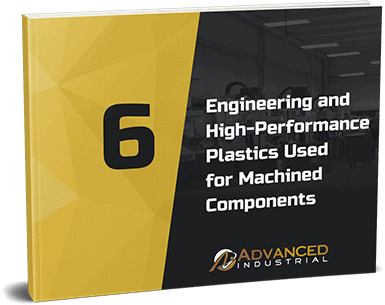3D Prototyping vs. PEEK Machining
3D prototyping and PEEK machining have revolutionized manufacturing by enabling manufacturers to create complex geometries and custom parts, creating more remarkable designs and production flexibility. This ability to quickly test and refine prototypes before committing to full-scale production has become vital to product development. It has allowed companies to reduce costs and bring products to market faster. Thus, these techniques have become essential in various industries, from aerospace and medical to automotive and consumer goods.
This article will compare these two methods based on various factors. We will also discuss the importance of functional prototype testing and how it identifies design flaws, reducing the risk of failure during mass production.
Comparing 3D Prototyping and PEEK Machining
Additive manufacturing and PEEK engineering are popular manufacturing methods used in various industries to produce high-quality parts. Below is a comparison of the two methods based on several factors:
- Turnaround time: Compared to PEEK engineering, 3D printing is faster because it doesn’t involve making specialized tooling.
- Ability to handle complex geometries: Stereolithography can create intricate shapes and geometries that PEEK prototyping cannot achieve due to its limitations in shape complexity.
- Meeting product specifications: 3D prototyping and PEEK machining can meet precise specifications. However, fused deposition modeling offers more design freedom, especially when creating complex parts.
- Pricing: Compared to rapid prototyping, PEEK fabrication is usually more expensive, particularly for smaller production batches.
- Material options: 3D manufacturing provides a broader range than PEEK fabrication since the latter is typically restricted to PEEK and a few other high-performance plastics.
- Surface finish: Compared to 3D printing, PEEK engineering offers a superior surface finish without extra post-processing steps.
- Design flexibility: Engineers can easily and quickly make changes using stereolithography.
- Production volume and application: PEEK CNC machining is the better option for producing many parts. However, additive manufacturing can be a more suitable choice for low to medium-volume production runs and prototyping.
- Dimensional accuracy: Stereolithography and PEEK fabrication are both effective methods for achieving high dimensional accuracy. Still, precision tools make PEEK prototyping generally more accurate than 3D printing.
Functional Prototype Testing
Testing a functional prototype is an essential part of the product development process. It involves assessing the prototype to ensure it meets the requirements and functions as intended. This can help identify design flaws, enhance the product’s performance, and decrease the likelihood of failure during mass production.
Both 3D prototyping and PEEK engineering can aid in functional prototype testing. Stereolithography allows for the creation of a physical model quickly, which can be tested for fit and function. Conversely, PEEK fabrication can create prototypes out of high-performance materials with properties similar to the final product.
Using both 3D printing and PEEK prototyping during functional prototype testing, designers and engineers can identify arising issues in the initial stages of product development. This enables them to make necessary adjustments to the design before production, saving time and money in the long run.
Choosing Between 3D Prototyping and PEEK Machining
When deciding between rapid prototyping with 3D Printing and PEEK CNC machining, keep the following three factors in mind:
Factor 1: Project Requirements
When choosing a project method, it’s essential to consider the final product intended use, the desired production volume, and the level of dimensional accuracy. One method may be better suited for your project based on your specific needs.
Factor 2: Pros and Cons
There are benefits and drawbacks to both stereolithography and PEEK fabrication. 3D prototyping is ideal for producing small quantities or intricate parts cost-effectively and timely. Meanwhile, PEEK prototyping is better suited for running larger amounts of products or projects with features that require precise tolerances – for example, a high volume run for the food processing industry.
Factor 3: Expert Consultation
Getting advice from professionals in the industry can offer valuable insights and assist you in making an informed decision. They can assist you in determining the most appropriate approach for your project, considering your unique needs and objectives.
Advanced Industrial: Your Go-To Partner for High-Quality 3D Prototyping and PEEK Machining
Advanced Industrial is a trusted precision machining and manufacturing solutions provider for various industries! Our team leverages state-of-the-art technology and advanced techniques to deliver superior-quality products that meet your specific requirements.
With our expertise in rapid and PEEK prototyping, we can help you bring your ideas to life quickly and efficiently. Our 3D printing capabilities enable us to produce functional prototypes in a fraction of the time required for traditional manufacturing methods. This will allow you to speed up your product development cycle and reduce time-to-market.
Contact us today to learn more about our 3D prototyping and PEEK machining services and discover how we can help you achieve your manufacturing goals!


